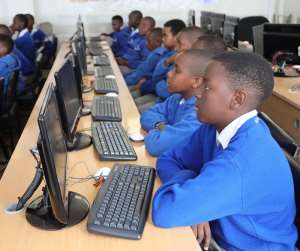
“Teaching students collaboration instead of competition prepares them for the digital economy, where innovation is driven by partnerships and cooperation” - Aisha Schnellmann
In the 2020 academic school year, technology has made rapid and great inroads in the classroom. Alongside this technological transformation, we witness the 21st-century skill and global competency of collaboration.
The ability to work collaboratively with others is becoming an essential component of contemporary school reform. In this modern-world being a master in one area is not enough to bring about success, it is important to hone the 21st-century skills and global competencies for a future that is arriving.
Educators across the globe, especially this year, used the latest technologies to enhance the learning process and support students in achieving the best academic outcomes. These ranged from:
- Live video sessions
- Recorded lessons
- Assignments
- Chat rooms
- E-examinations
- Staff meetings
- Parent meetings
This period has to a greater extent emphasised the need for institutions to embrace digital tools, not only for survival, but as a key resource for the running of institutions.
Collaborative learning was one such key 21st century skill, especially practiced in the online space. When working collaboratively it can lead to a more motivated and self-monitored working environment. When a standalone individual is working on a task, they have total independence. If that person starts to slack in his/her work nobody will be there to redirect their focus. In a team many people carry responsibilities for the same goal. They depend on each other’s observations and draw qualities from each other’s inputs and ideas. Effective teams can often then handle their own performance without intervention, as they use each other as a source of motivation to push each other’s work forward.
However, educators are fully aware that not all students find it easy to work in teams. Therefore, using the great potential of online collaboration tools to engage students, provides an outlet for creative exploration of ideas, and as a way for students to gather valuable data. These tools are great resources to entice students in a collaborative learning environment.
Collaborative learning technologies bring about conversation and debates of topics, engage in communication tools that allow for synchronous and asynchronous, text, voice and video chats, it engages students in an online space that facilitate brainstorming, document conceptualisation and editing and remote presentations of topics. It also supports the need for student’s instant gratification to receive feedback and having questions answered either by teachers or their peers.
The variety of tools available means that there is a technology for almost any classroom application, from idea generation and brainstorming to research of a project and peer-review of different projects. The technologies also give a holistic approach by being able to apply discussions and interactive lesson reviews. For example, Purple Mash - as used for early years at Makini, Google Apps, Office 365, Moodle platforms, Kahoot games among many others.
The opportunities presented by use of digital tools are varied. Some of these include:
- Differentiated learning
- Professional documents for teachers
- E-registers
- Homework/assignment trackers
- E-reports
- Customer focus via ticketing solutions
- Recruitment
- Learner and staff record-keeping
- Distant learning
- Hybrid learning
- Lesson resources
- Opportunity for staff CPD (Continuing Professional Development)
- Student elections
- Financial records
- 21st-century skills/courses such as coding and robotics etc.
In a knowledge-driven society, students develop appropriately through meaningful 21st-century skills to live, think, and work successfully. To attain this aim, students require specific knowledge-base and competencies in technology and collaborative learning.
Always keep in mind that we are preparing our children for a future full of skills that have not yet been invented. Therefore, all children deserve an education that invites them to grow their own global understanding, connections, and abilities that are provided within the global technology network.




 Lay KPMG audit report on SML-GRA contract before Parliament – Isaac Adongo tells...
Lay KPMG audit report on SML-GRA contract before Parliament – Isaac Adongo tells...
 Supervisor remanded for stabbing businessman with broken bottle and screwdriver
Supervisor remanded for stabbing businessman with broken bottle and screwdriver
 NDC watching EC and NPP closely on Returning Officer recruitment — Omane Boamah
NDC watching EC and NPP closely on Returning Officer recruitment — Omane Boamah
 Your decision to contest for president again is pathetic – Annoh-Dompreh blasts ...
Your decision to contest for president again is pathetic – Annoh-Dompreh blasts ...
 Election 2024: Security agencies ready to keep peace and secure the country — IG...
Election 2024: Security agencies ready to keep peace and secure the country — IG...
 People no longer place value in public basic schools; new uniforms, painting wil...
People no longer place value in public basic schools; new uniforms, painting wil...
 'Comedian' Paul Adom Otchere needs help – Sulemana Braimah
'Comedian' Paul Adom Otchere needs help – Sulemana Braimah
 Ejisu by-election: Only 33% of voters can be swayed by inducement — Global InfoA...
Ejisu by-election: Only 33% of voters can be swayed by inducement — Global InfoA...
 Minority will expose the beneficial owners of SML, recover funds paid to company...
Minority will expose the beneficial owners of SML, recover funds paid to company...
 Prof. Opoku-Agyemang has ‘decapitated’ the NPP’s strategies; don’t take them ser...
Prof. Opoku-Agyemang has ‘decapitated’ the NPP’s strategies; don’t take them ser...
